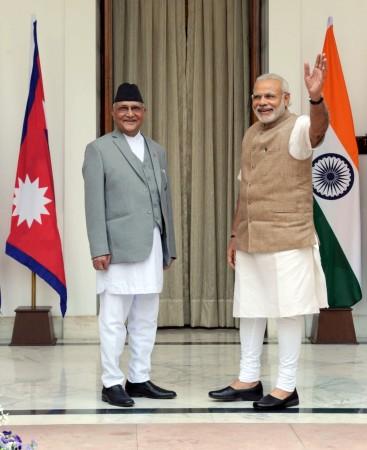
India and Nepal signed nine agreements Saturday as Nepalese Prime Minister KP Sharma Oli made his first visit to India after coming to power last year.
The nine MoUs entailed the utilisation of the $250 million granted to Nepal by India for post-earthquake reconstruction, improving road infrastructure in Nepal's Terai region, providing transit for goods between Nepal and Bangladesh through the Kakarbitta-Banglabandh corridor, and operationalising the Vishakapatnam port, according to a statement by the External Affairs Ministry.
India and Nepal had seen a strain in ties following violent protests by Madheshis, a mainly Indian-origin community, who had blocked the India-Nepal border since last September to protest Nepal's new constitution. The Madhesi protesters blocked the key Birgunj-Raxaul border, which is the main route between the two countries that sees more than two-third of the total supply of goods from India. The blockade had created an acute shortage of essential goods in Nepal, which is still reeling from the devastating earthquake that hit the country last April.
"The main reason for my visit is to clear the misunderstandings that have settled in the last few months," Oli said during a joint statement, according to external affairs ministry spokesperson Vikas Swarup.
Modi called on the Nepalese government to resolve the constitutional issue through "political dialogue" and by "taking along all sections" of the country. He also said in his statement the neighbouring countries agreed to ensure that their open border is "not abused."
"We will not allow terrorists and criminals to abuse our open borders. In this context, security agencies of the two countries will intensify their cooperation," Modi said.
Oli was accorded a ceremonial welcome at the Rashtrapati Bhavan Saturday.
Oli and Modi inaugurated the 400kv India(Muzzafarpur)-Nepal(Dhalkebar) transmission system, which will start with an initial supply of 80 MW and will then expand to 600 MW by December 2017.
Indian trucks had entered Nepal for the first time in over four months earlier in February.















